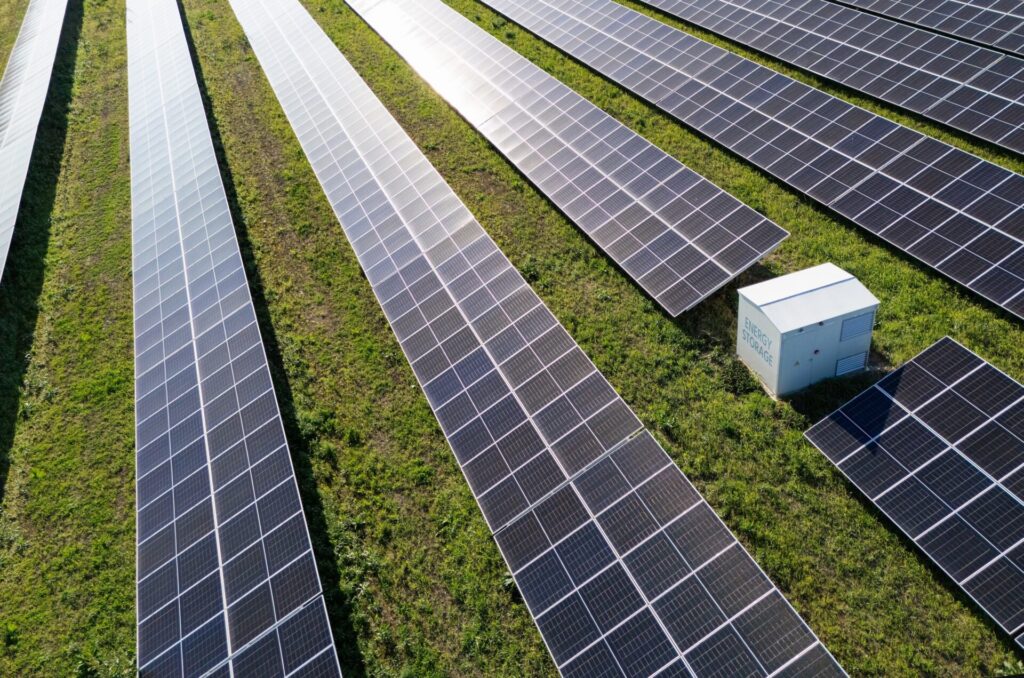Following the recent COP30 climate talks in Brazil, global attention shifted to South Africa for the G20 Summit in Johannesburg....
Read More- Industry Updates
The Importance of Co-Location In The UK’s Energy Future
-
 Kate McCann
Kate McCann
- 3 minute read
This approach is not new, but recent advances in policy, economics, and technology are bringing it into sharper focus. With electricity demand expected to double by 2050 and grid capacity constraints already apparent, co-location is emerging as a practical method to maximise land use, reduce connection delays, and improve energy system flexibility.
What is Co-Location?
Co-location refers to the installation of two or more energy technologies – most commonly renewable generation and energy storage – at the same geographic location, sharing infrastructure and a single grid connection. In the UK, the most frequent pairing involves solar photovoltaic (PV) or onshore wind generation with BESS, allowing surplus electricity to be stored during peak generation and dispatched when demand rises or generation dips.
From a grid perspective, co-location offers efficiency by avoiding the duplication of physical infrastructure and reducing the pressure on transmission capacity. From a business standpoint, it improves revenue certainty, spreads investment risk, and enhances project economics

Why Now?
-
Grid Access Constraints:
National Grid’s transmission network is under increasing strain, with many projects facing long wait times for new connections. Co-location provides a workaround by making more efficient use of existing grid connection points.
-
Balancing Intermittency:
As more renewable energy comes online, variability becomes a central challenge. Battery storage in co-located systems can mitigate fluctuations by storing excess energy and discharging it during lulls in generation.
-
Policy and Market Signals:
Reforms in the UK’s Contracts for Difference (CfD) scheme and market design are beginning to favour flexible, dispatchable capacity. Co-located systems can participate more competitively in ancillary services markets, frequency response, and capacity markets.
-
Land Use Efficiency:
With land availability and planning permissions often key barriers, combining assets on the same site allows developers to reduce environmental impact, speed up permitting, and gain more value per hectare.
Benefits of Co-Location
Co-location offers a range of practical and economic benefits. By sharing grid connections and on-site infrastructure, project developers can lower both capital expenditure and ongoing operating costs. Hybrid sites can access multiple revenue streams, including generation tariffs, wholesale energy trading, and participation in balancing or frequency response services.
Challenges and Considerations
On the financial side, modelling returns for hybrid systems is more complex, often requiring detailed assumptions across multiple technologies and markets. These technical and policy uncertainties can make financing and delivering co-located projects more difficult, particularly for new entrants.
Case Studies and Market Momentum
In Scotland and Wales, where wind resources are abundant, co-located storage is being explored as a way to reduce curtailment and improve local grid resilience. These developments align with regional net-zero targets and community energy initiatives.
For policymakers, regulators, and energy firms alike, accelerating the deployment of co-located assets will require coordinated planning, consistent regulation, and the right market incentives. As these pieces come together, co-location may well shift from an emerging strategy to a central part of the UK’s net-zero future.



